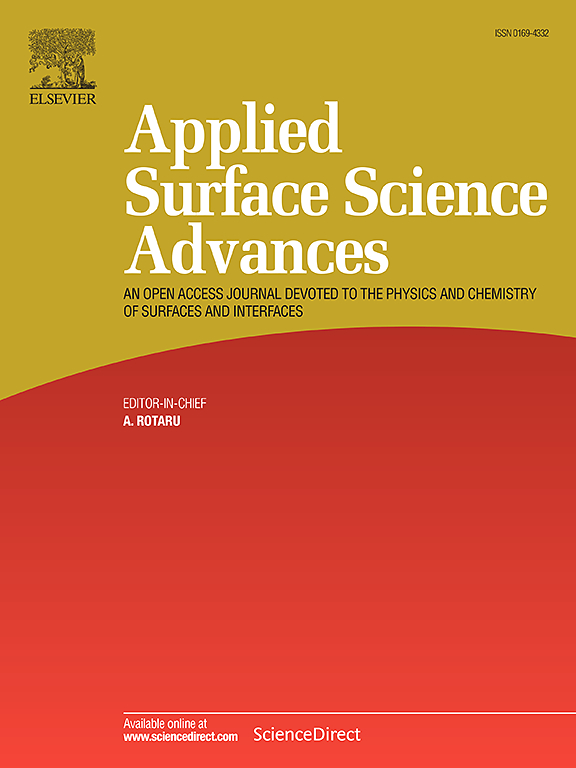Measurement of interfacial adhesion strength of Copper-Silicon based dielectric interfaces via laser spallation test
IF 8.7
Q1 CHEMISTRY, PHYSICAL
引用次数: 0
Abstract
In this study, the interfacial adhesion strength between copper (Cu) and dielectric films was investigated using laser spallation test. To quantitatively evaluate the interfacial strength, the compressive stress wave generated by laser pulse was precisely calibrated, and interface stress was analyzed through wave propagation simulation. The highest adhesion strength was observed in plasma-enhanced chemical vapor deposition (PECVD) silicon oxide (63.57±11.31 MPa), followed by PECVD silicon nitride (53.95±12.04 MPa) and low-pressure chemical vapor deposition (LPCVD) silicon nitride (26.06±6.44 MPa). Scanning electron microscopy with energy dispersive spectroscopy (SEM-EDS) analysis confirmed that failure consistently occurred at the Cu/dielectric interface. The relatively high adhesion of PECVD silicon oxide was attributed to both mechanical and chemical factors. Atomic force microscopy (AFM) analysis revealed its rougher surface enhances mechanical interlocking. In addition, X-ray photoelectron spectroscopy (XPS) and Fourier transform infrared (FTIR) analyses confirmed the presence of hydroxyl groups (-OH) at the interface, facilitating Cu oxidation and Cu-O bond formation. Overall, this comprehensive study provides critical understanding for improving Cu/dielectric interfacial reliability in semiconductor devices.
用激光散裂试验测量铜硅基介电界面的界面粘附强度
本文采用激光散裂试验研究了铜与介质膜之间的界面粘附强度。为了定量评价界面强度,对激光脉冲产生的压应力波进行了精确标定,并通过波传播模拟对界面应力进行了分析。等离子体增强化学气相沉积(PECVD)氧化硅的附着强度最高(63.57±11.31 MPa),其次是PECVD氮化硅(53.95±12.04 MPa)和低压化学气相沉积(LPCVD)氮化硅(26.06±6.44 MPa)。扫描电镜和能谱分析(SEM-EDS)证实,Cu/介电界面的破坏持续发生。PECVD氧化硅具有较高的附着力,这是机械和化学因素共同作用的结果。原子力显微镜(AFM)分析表明,其粗糙的表面增强了机械联锁。此外,x射线光电子能谱(XPS)和傅里叶变换红外光谱(FTIR)分析证实了界面上羟基(-OH)的存在,促进了Cu氧化和Cu- o键的形成。总的来说,这项全面的研究为提高半导体器件中Cu/介电界面的可靠性提供了关键的理解。
本文章由计算机程序翻译,如有差异,请以英文原文为准。
求助全文
约1分钟内获得全文
求助全文

 求助内容:
求助内容: 应助结果提醒方式:
应助结果提醒方式:


